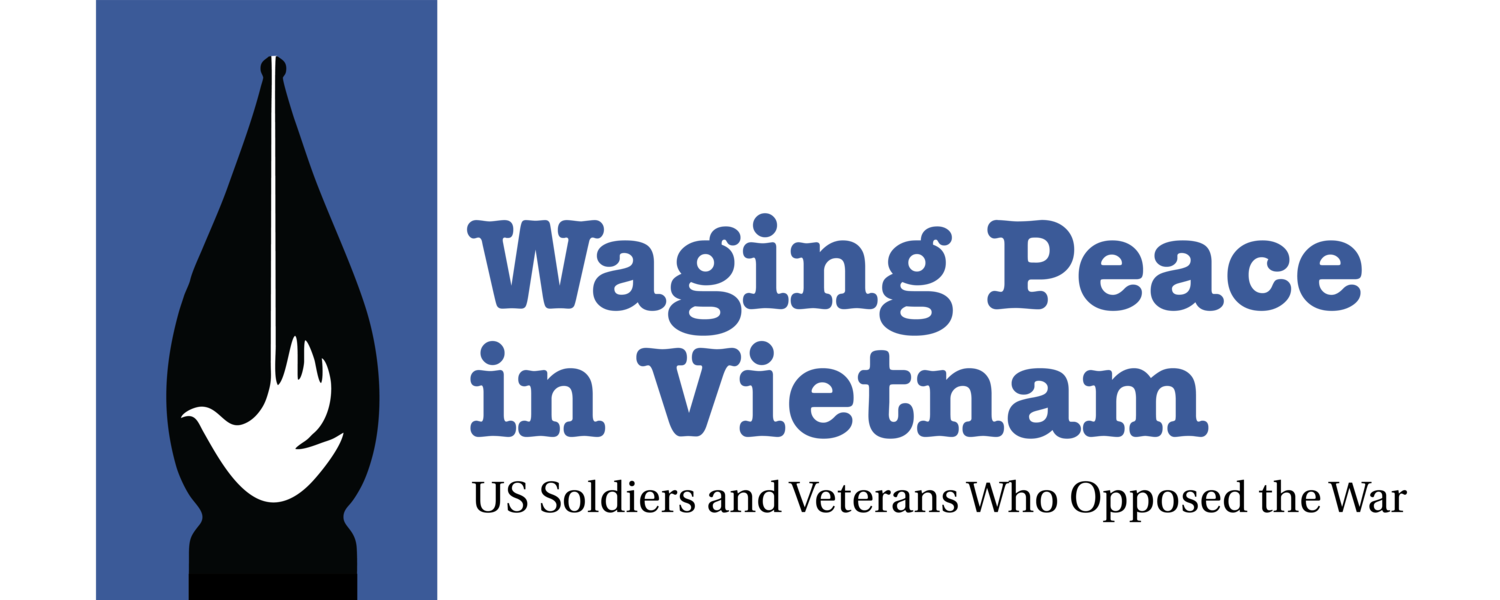IN Their Own Words
Thirteen veterans share their experiences and perspectives regarding the GI opposition to the Vietnam War. Most of these first-person video accounts run less than five minutes each. All of them are very personal stories, including Susan Schnall’s, which recounts why she joined the Navy and how she became an antiwar activist. Also, Waging Peace in Vietnam co-editor David Cortright offers a cogent overview of the movement.
Howard Levy, M.D. was court-martialed in 1967 and received a three-year sentence. He has
practiced dermatology in the South Bronx at Lincoln Hospital for 50 years and has been active in many peace and civil-rights movements. Here, he explains why he refused to train Green Berets.
James “JJ” Johnson was a member of the Fort Hood Three–the first soldiers to publicly refuse to serve in Vietnam. For their refusal in 1966, the three–African American, Latino and white–each served 28 months in the Ft. Leavenworth army prison. Johnson later worked for many years as a labor journalist and communications official for several major unions in New York.
Susan Schnall was a Navy nurse who led the GI antiwar march in San Francisco in October 1968. She is an assistant adjunct professor at New York University School of Professional Studies, Healthcare Management and the president of the New York City Veterans For Peace. She has organized scientific panels about Agent Orange at American Public Health Association annual meetings.
David Cortright, co-editor of the Waging Peace exhibit’s companion book, offers an overview of
the GI Movement, along with reflections on how he became a leader of the movement himself.
Judy Olasov was one of the first staff members of the very first GI coffeehouse, which opened in her native South Carolina in 1967. Listen to her explain the key role she played opening these antiwar centers, one after another, at bases from coast to coast.
Jeff Roy spontaneously spoke up at the opening of the exhibit at the War Remnants Museum in March 2018. He later explained that it was only on that day, during a dialogue between Vietnamese and American veterans, that he came to identify the exact moment when he turned against the war.
Tom Wilber, a twenty-year Navy veteran, was a child when his father’s fighter jet was shot
down over Vietnam. Tom explains how his religious, conservative father came to oppose the
war during his time as a prisoner—and maintained his opposition after his release, in spite of
threats by America’s Department of Defense.
“My grandmother Safroni was Seminole. She had much to do with the way I think now.”
“That was a bit shocking… Going to Afghanistan, that’s what moved me to join Veterans for
Peace."
“There are so many ways to measure how a country is destroyed. It’s not just that people have died in that country. It’s not just the injured people. It’s not just all the infrastructure and buildings that have been blown up…”
Dix was sent to Federal prison for refusing a direct order to board a plane to Vietnam. One of the Fort Lewis Six, he is still fighting for justice and against wars of imperialism.
Halim was just back from Vietnam, where he came to feel he had more in common with the enemy than those who sent him to war. He wanted nothing to do with riot duty in Chicago.

